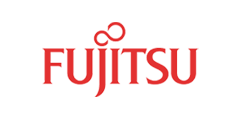FUJITSU Collaborates with QuTech in Development of New Technology for Freezing Electronics to Control Diamond Spin Qubits

Fujitsu today announced a collaboration with QuTech (1) for the development of the world's first cryogenic electronic circuits for controlling diamond-based quantum bits. Enabling convenient operation of both the qubits and the control electronics in a compact cryogenic refrigerator, the new technique addresses the ‘wiring bottleneck’ in cooling qubits while maintaining high quality performance, marking a significant milestone toward the realization of larger-scale quantum computers.
QuTech will present the results of the joint research project with Fujitsu at the "International Conference on Solid State Device Circuits ISSCC 2024 (IEEE International Solid-State Circuits Conference 2024)," one of the largest conferences on semiconductor technology to be held in San Francisco, U.S., from February 18, 2024 to Thursday, February 22.
Background
Qubits make use of extremely fragile quantum effects that are perturbed by various influences including smallest amount of heat. Heat leaking into quantum computers would immediately destroy the information that a qubit was holding, rendering any quantum computer unreliable and unusable. To assure accurate operation, qubits need to be cooled down to the coldest temperatures possible, close to absolute zero kelvin (-273°C).
Accurate operation of the electronic circuits controlling the qubit represents an ongoing challenge, and conventional methods to keep qubits cold enough require a small cryogenic refrigerator, where qubits are connected with wires to the electronics outside the fridge.
However, wires between the cold qubits and the room-temperature electronics significantly impact reliability, manufacturing and the size of quantum computers.
To address this, Fujitsu in collaboration with researchers and engineers at QuTech—a collaboration between the TU Delft and TNO – developed a new technique leveraging QuTech’s expertise in cryogenic semiconductor integrated circuit (cryo-CMOS circuit) technology and diamond spin qubit, which is more robust to heat disturbance, to successfully drive a diamond spin qubit using a cryo-CMOS circuit installed in a cryogenic refrigerator. The new technology enables the installation of a cryo-CMOS circuit at the same temperature as a diamond spin qubit (4 Kelvin), which can simplify wiring and lead to the construction of high-performance, large-scale integrated quantum computers.
Newly developed technology to cool electronics
Fujitsu in collaboration with QuTech developed a new technology that cools the whole quantum computer instead of just the qubits. Leveraging cryo-CMOS circuit technology, Fujitsu together with QuTech designed a magnetic field application circuit and a microwave driving circuit necessary for driving a diamond spin qubit at 4 Kelvin. By driving this magnetic field application circuit and microwave driving circuit in the same cryogenic refrigerator as the qubit, Fujitsu and QuTech successfully generated a magnetic field and microwaves strong enough to drive the diamond spin qubit.
The new technology simplifies wiring, and may one day contribute to the realization of high-performance, large-scale integrated quantum computers.
Fabio Sebastiano, Lead Investigator, QuTech, explains: “In designing electrical systems, there is always a balance between performance and power: the increase of one means a decrease of the other. Our challenge is obtaining high performance, while also not limiting the power consumption.” Masoud Babaie, Principal Investigator, QuTech adds: “This is crucial as too much power could overheat the cryogenic refrigerator used to keep the system at a low temperature. We used specific cryogenic electronic controllers (cryo-CMOS controllers) to alleviate the interconnect bottleneck: now we need fewer wires to enter the cryogenic fridge, which greatly enhances the scalability of the whole quantum computer.”
Dr. Shintaro Sato, Fellow, SVP & Head of Quantum Laboratory at Fujitsu Research, Fujitsu Limited, explains: "Wiring between control circuits and qubits is a common problem in the process of scaling up quantum computers. Results of our joint research highlight the potential of cryo-CMOS technology for diamond spin qubits to overcome this bottleneck. We anticipate that the new technology will enable us to achieve the high scalability expected in quantum computers using diamond spin qubits."
Future Plans
Realizing cryogenic electronic circuits for controlling diamond-based quantum bits, the newly developed technology signifies a significant step toward the realization of large-scale quantum computers. Moving forward, Fujitsu and QuTech will further enhance the newly developed technology, including the expansion from 1-qubit operation to 2-qubit operations, implementation of the qubit read-out functionality, and the scaling up to a larger quantum processors.
- +1 Like
- Add to Favorites
Recommend
- Fujitsu Limited and Fujitsu Australia today announced acquisition plans for Asia-Pacific region’s largest independent ServiceNow-specialist, Enable Professional Services
- Fujitsu Components 24GHz Doppler Radar Sensor Module Wins 2020 Best of Sensors: Most Innovative Product Award
- Fujitsu Achieves Major Technical Milestone with World‘s Fastest 36 Aubit Quantum Simulator
- Nidec’s Water-cooling Modules are Adopted for Use in Certain Models of Fujitsu’s Optical Transmission System, FUJITSU Network 1FINITY Series
- Fujitsu Establishes Open All-Photonics Network Lab in Europe to Promote Global Expansion of Innovative Network Infrastructure
- Fujitsu Technology Enables 60%* More Fans to Attend Live Events with Safe Covid Distancing
- Fujitsu Launches Sustainable 5G vRAN to Deliver Potential Reductions in CO2 Emissions of Over 50%
- Fujitsu Components Introduces 6.6kW Relays for On-board Charging
This document is provided by Sekorm Platform for VIP exclusive service. The copyright is owned by Sekorm. Without authorization, any medias, websites or individual are not allowed to reprint. When authorizing the reprint, the link of www.sekorm.com must be indicated.






























































































































































































































































































































































































































































































































































































































































































































































































































































































